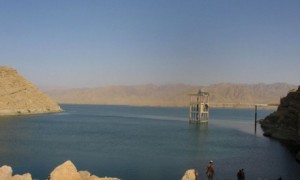Defense Analysts Echo The Captain’s Journal Concerning Kajaki Dam
BY Herschel SmithIn The British Approach to Counterinsurgency (and in the associated comments), The Captain’s Journal made it clear that while the British had good reason to celebrate the passage of a hydroelectric turbine to the Kajaki dam in the Helmand province of Afghanistan, unfortunately it had to pass through some foreboding terrain, area owned by the Taliban. This is a pointer to larger problems. Indeed, 200 Taliban had to be killed on the way to the dam. This should cause the celebratory mood to pause long enough to consider how the dam, its transmission lines, its operators and the electrical grid in the towns are to be protected. We linked previous articles in which we had discussed these same issues regarding infrastructure in Iraq.
In one such instance, al Qaeda interfered with an irrigation canal simply by shoveling dirt into it. In other instances the electricity grid had proven to be unreliable due to its far flung and widely distributed nature. Killing the Taliban, we argued, is necessary for the protection of the infrastructure. In order to protect the infrastructure, one has to neutralize its enemies. Now, defense analysts and experts are weighing in echoing these same themes.
British forces pulled off an epic mission to deliver a 200-tonne turbine to a dam in the heart of Taliban territory in Helmand, but the $100m project must overcome serious obstacles before it can improve the lives of local Afghans, security analysts said yesterday.
Nearly 5,000 troops were involved in the operation to bring the turbine and other machinery through 100 miles of insurgent strongholds to the village of Kajaki, where it will be used to refurbish an ageing hydroelectric dam.
However, engineers predict it will take months before the dam is running at full capacity, and it will be at least two years before the electricity it generates reaches the 1.8 million intended beneficiaries, who live in remote villages in the Helmand river valley.
Even then, electricity supplies are likely to face disruption from Taliban attacks unless the region is cleared of militants, analysts said.
The area is not densely populated, so the power lines must cover many miles of hostile land to reach the remote villages that are due to be linked up to the dam. British troops in Helmand control an area of only a few miles radius beyond the Kajaki dam, so pylons and substations will have to cross what is now a stronghold for militants operating in the region.
“The power lines coming out of Kajaki are going to be extremely vulnerable to attack,” said Matthew Clements, Eurasia analyst at Jane’s Defence. “The arrival of the extra turbine is a major blow to the Taliban, so they are going to be keen to make sure the project fails.”
[ … ]
“In Iraq we’ve seen that overhead power lines are extremely difficult to protect, and there’s no point generating electricity if you can’t distribute it,” said Paul Smyth, head of operational studies at the Royal United Services Institute for Defence Studies.
It’s a matter of focus. Although there is no on-off digital switch to stop the insurgency, and although the notions of kinetic operations and infrastructure cannot be completely sequential, still, there must be some basic level of security in order for nonkinetic operations to be successful. Killing 200+ Taliban shouldn’t be seen merely as an effect of the recent British operations in Southern Afghanistan. It should be one of the primary goals.






Trackbacks & Pingbacks
Comments
RSS feed for comments on this post. TrackBack URL
Leave a comment